
SaGa Frontier Remastered Review
I'm not entirely sure what Square Enix's so-called "ongoing SaGa Project" entails exactly, but I am decidedly, enthusiastically, here for it. Very few other series scratch the same itch that SaGa does, and it looks like the series is sticking around at least a little bit longer with the newest re-release for SaGa Frontier Remastered.
It's tricky to explain SaGa (maybe) to people who are not already familiar. I can try though.
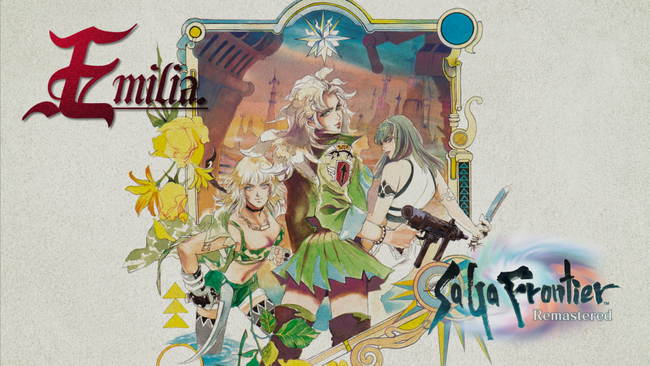
SaGa is one of the most unconventional RPG franchises out there. It is also one of the most difficult to describe the precise appeal. Many SaGa games are RPG playgrounds that aren't outwardly driven by narrative or even by characters. Not only do the games tend to revel in intricate game mechanics and open-ended structure, but also work as a collection of ideas more than anything else, both in terms of story and gameplay.
Oftentimes in SaGa, components are left vaguely explained at best, and frequently you won't be told exactly what you 'need to do' or 'how to play'. That's because first and foremost, SaGa is about wanderlust, experimentation, and discovery. You just have to try things and see what happens.
Series creator Akitoshi Kawazu's design philosophy towards SaGa is largely shaped by his experiences when he was younger, trying to learn how to play games like Ultima IV without knowing much English. Without understanding the so-called 'rules' from the start, he instead had to figure things out just by trying things, fumbling through, failing sometimes, and observing the results. SaGa games effectively try to offer a similar experience, where rules are determined through experimentation rather than a dictated set of instructions.
SaGa Frontier originally released back before YouTube existed and when the online gaming sphere usually manifested in the shape of message boards. In a series full of weird games, Frontier might be one of the weirdest. It's technically the seventh game in the SaGa series, following the original trilogy of 'Final Fantasy Legend' Game Boy titles and the three Romancing SaGas on Super Famicom. It takes elements from each of those trios of games, such as transforming monster party members from the Game Boy entries and the multiple protagonist selection from the SFC titles. If SaGa Frontier is your introduction to the series, it can be ... a lot to take in at once.
Throughout the series' history, as soon SaGa starts to settle into some routine, it decides to break it all up and try new things, just for fun, because why not? Several RPGs on the PlayStation were already exploratory in nature, releasing at a time when developers really started experimenting with varying gameplay and scenario design in the exploration of what was possible in the genre.
Ultimately, SaGa Frontier is one of the most avant-garde titles of its era. It's weird. It's strange. It's cool. It might take some getting used to.
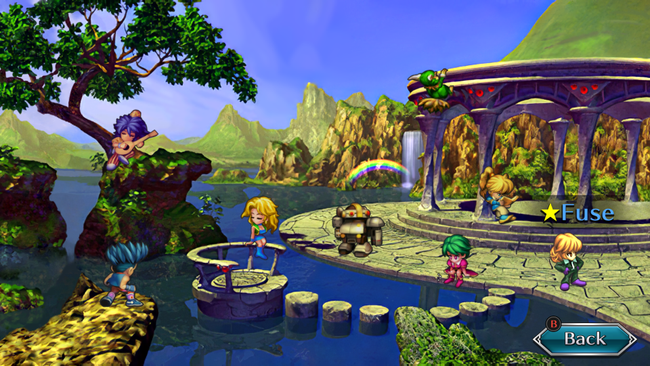
At the top of Frontier, you select one of seven protagonists to play through their story. There's Red, the punk-turned-superhero, or Emilia, the supermodel framed for her fiancé's murder. There's also a monster option with Riki, a robot option with T260G, and a few more besides. You may have heard about a new 8th character Fuse added to the remaster, who works a little bit differently than the rest.
Unlike the Romancing SaGa games, SaGa Frontier's individual character stories are quite a bit more unique, with each character having their own goal to pursue and unique ending. Each story opens up a little bit differently, and you might start in a location completely different from one character to the next. What other characters are available to join you can also change depending on the 'route' you chose.
Don't expect a lot of dialogue in SaGa Frontier. There is some, certainly, but the game has an economy of words that might leave some dissatisfied if they are looking for lengthy character interactions. In fact, everything story-related in Frontier has a brisk, pointed pace to it. Things keep moving, almost amusingly so, as no single moment lingers for long.
Your chosen main character doesn't only affect the narrative and character availability, though. Sometimes the overall structure of the game might vary wildly too, depending. This isn't like Octopath Traveler where the flow of each character's story follows the same outlined structure no matter who you pick. In SaGa Frontier, some character stories are more linear and streamlined, while others are much, much more open-ended. Some characters are much more suited to beginners, and others are just asking for complications if you don't know what you are getting into.
Once you've picked a character and been introduced to their premise, eventually, you'll end up with open access to the entire SaGa Frontier world. This manifests as a set of segmented locations in which you travel from place to place through ports in each local town. You can head to the seedy city of Scrap to visit the local pub, or maybe you can head to the urban metropolis of Manhattan, or perhaps you want to head to the ruins around Shrike. It's up to you. Just, go wherever, do whatever - at least most of the time. There are places to explore, items to find, people to meet, and you might even find a quest or two.
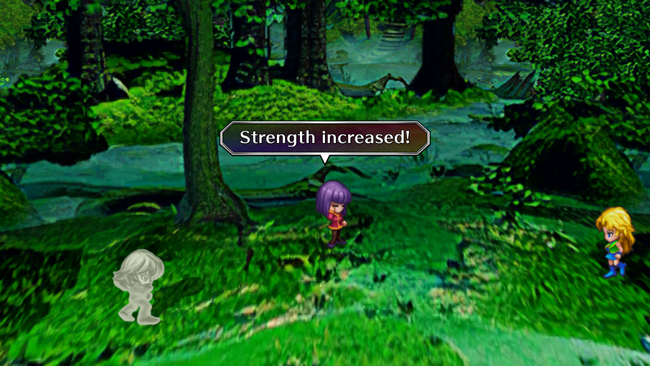
Combat in SaGa Frontier is a round-based affair and generally follows many of the conventions established earlier in the series. I say 'convention', but the systems in place will feel scarcely 'conventional' if you haven't already familiarized yourself with components common to SaGa games. For one, there are no numbered character levels or skill trees, or even 'experience' at all. Characters will instead strengthen individual stats after battle -- sometimes.
Stats are powered up through exercised use: the more you perform a certain type of ability, the more your character will become tailored to that type of ability. Use magic to get better at using magic, and so forth. This general concept can see its origins as far back as the original Final Fantasy 2 and has become a mainstay through the SaGa series to the most modern entries.
New abilities used in battle are also obtained semi-randomly. Rather than unlocking new skills at set pre-determined points, human characters simply have a semi-random chance to *glimmer* new abilities at any point in midst of battle. There are, of course, underlying rules in the game systems as to precisely how abilities can be learned (this is a programmed game after all), but there is not anything explicitly shown to the player. Generally speaking, the stronger your opponents are, the more likely characters are to gain new skills.
SaGa games also coat this stat/ability system with a world that scales to your party strength. The stronger your party gets, the stronger that the enemies you face become, and thus you can earn more stats and abilities from fighting stronger enemies, and so on.
That's not even touching on how monster party members, mystic party members, and robot party members all work differently than the human party members in SaGa Frontier. Combat mechanics in the game can get pretty dense, and fully understanding precisely how everything comes together often boils down to, bluntly, trying things and seeing for yourself.
Those realization moments when you manage to start building a diverse party, discover properly powerful arrangements, and start to understand how to best take on enemies -- those moments of success are enlivening. There is considerable draw to SaGa in learning the sorts of things you are able to do in the game, once you actually understand it.
The original SaGa Frontier was already one of those games where, once you've started to piece together various gameplay systems, you can start to learn how to bend the game to your will, severely. Balance is not necessarily a strong suit for SaGa, and nor does it need to be. With so many freedoms given to the player in character selection, abilities, and party combinations, you might inadvertently or deliberately create a team that can run circles around almost anything the game can throw at you. Given the game's style, there's entertainment to be found in learning the ways you can master it.
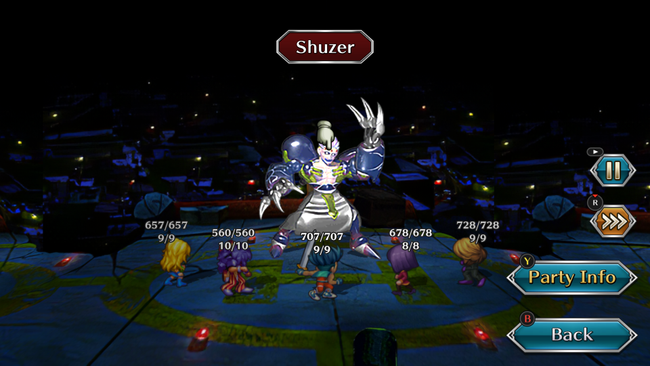
There are numerous additions made to Frontier's remaster for the sake of some modern quality of life. Many of these are commonly found in contemporary RPGs, while others are actually difficult for me to reconcile that they were *absent* in the original game. To list out all the small additions made can get into the weeds a bit, but the re-release now includes: turbo-speed modes in & out of battle, a story synopsis to clue players on where to go next, more detailed equipment menus to better explain what gear does, New Game+ functionality, and an option to flee from battle. That last point is crucial to restate, because in the original SaGa Frontier you would have to fight each battle you came across.
Many of these new additions are welcome of course, even though they can sometimes easily trivialize certain aspects of the game as they were originally designed. Just as a quick example, you can now flee from every single battle in a dungeon area as you make your way to the next boss, saving your skill points and items.
Newly added New Game+ functionality is especially important to mention, specifically due to the game's multiple protagonist nature. Once you've completed a story route with one of the characters, which takes roughly ten hours, you can load your savefile into the next character you choose so you don't have to start completely from scratch.
It's like a snowball rolling downhill now when you consider the addition of New Game+. Any item, skill, or stat gained from your first chosen character can be saved when you start your second character, and then any additional gear or abilities learned carry over still to the next playthrough after that. This allows experiencing additional routes to be much, much more conveniently done, if you so choose. Previously re-released SaGa titles also had similar New Game+ functionality added, and its inclusion here is similarly executed and welcome.
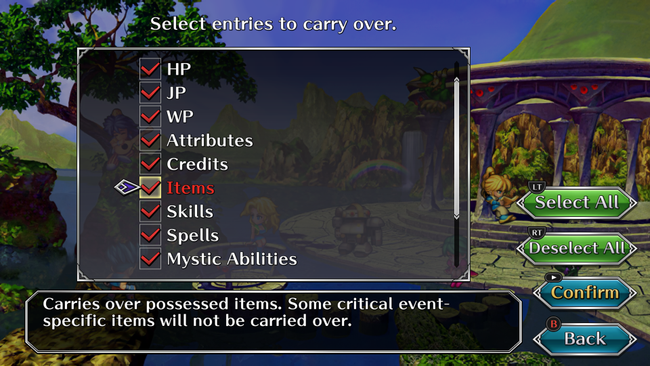
Despite my adoration for the SaGa series overall, there are a few components to SaGa Frontier that I do think are implemented poorly in some regards, specifically in comparison to other games in the series. As each character's storyline is a little bit more unique this time around, sometimes, Frontier will throw you into certain scenario segments divorced from the rest of the game's more open-ended structure. In these scenarios, you are sometimes more limited in where you can go and who can join with you - something actually a little bit at odds with the larger series philosophy.
For example, early on in Red's route, you ultimately will end up stuck aboard an airship as you work to free it from hijacking mercenaries. Here, you cannot travel anywhere else, recruit more units to your team, gather items, and you are generally less able to experiment with your combat party. You are stuck with a limited, pre-set group. It's a tough location already, perhaps even made more challenging through its claustrophobic, restricted nature. If you struggle with enemy encounters here, there's not too much you can do about it in the moment.
The new story synopsis hints might actually make things worse in some regard. If you follow the directional hints to the letter and end up mainlining Red's route straight to the airship scenario, you'll probably end up more limited in capability than if you had actually explored a bit beforehand. It's actually a little amusing to me that the times when the game seems more guided is when I feel like additional restrictions end up only making things more tedious than they really should be.
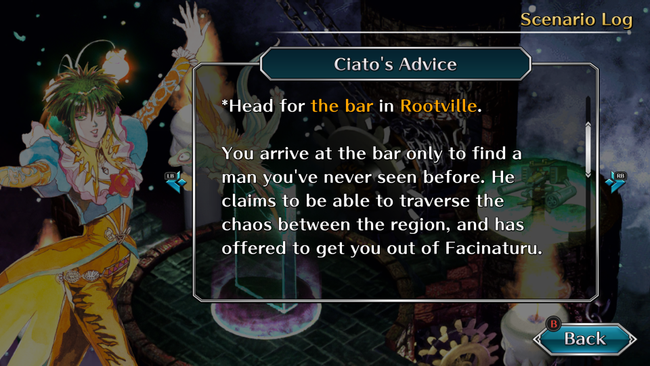
There is also, surprisingly, a lack of sidequest-style content to be found in SaGa Frontier. The Romancing SaGa games were generally chock-full of events and scenarios you can stumble across as you explore their respective game worlds. In fact, that's pretty much the 'meat' of those games that establish the worlds they are set in. Frontier is unusually thin in comparison, with only a handful of optional events that can take place. This leads exploration to be more about dungeon crawling and fighting than interesting or quirky quests. There are a few, but it becomes especially apparent on repeat playthrough that there could have been more here.
Some character routes are also more beginner-friendly than others. Emilia would be my pick as a good starting character, as she gets some useful party members early on and her overall game structure is more clearly delineated to 'main missions' and 'optional exploration'. Lute might be a fairly poor choice for a starter, because his storyline is very loose in comparison, allowing him to go straight to his final boss fight right from the get-go. If you just follow the story suggestions, you aren't going to stand a chance when you get there. You are meant to wander for a while, although there's nothing concrete telling you this.
Newly added to the remaster is a route for Fuse, one of the characters from the original game. He works a little bit differently than the rest of the cast and actually has seven variations of his storyline, one for each of the other seven characters in the game. These "Fuse Routes" are basically like what-if scenarios based on the original routes, only now with Fuse present.
These storylines are fun and quirky, and offer alternate takes on existing story details. Some routes, like Lute for instance, actually manage to be further explained through Fuse's added routes, filling in some story gaps that were left vague years ago.
There is a little bit more added content elsewhere, too. Asellus has a few new events in the remaster that were cut from the original. These ultimately result in quick optional dialogues that won't add a lot of playtime or anything like that, but they bring some nice additional flavor to Asellus' story and are a nice way to 'complete' her route nearly 25 years later.
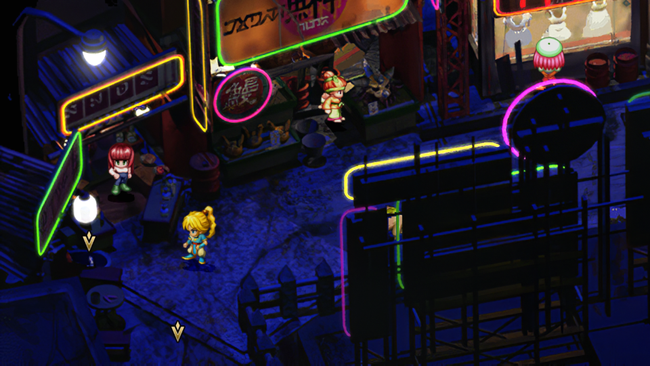
Being a remaster of an original PlayStation RPG, performance isn't too much of a concern for SaGa Frontier Remaster. Playing the game on PC, the port is a little bit bare and doesn't support rendering resolutions above 1080p, but it's certainly plenty already. The full-screen functionality can be a little bit wonky for higher resolution monitors, especially if you want true borderless window capability, but freeware like Borderless Gaming should solve those issues without much hassle at all.
The Nintendo Switch version of SaGa Frontier Remastered is also essentially free of any major issues. The one thing that is slightly annoying is that the game timer still seems to count even while in sleep mode, so for those who want accurate playtimes, you may want to close the game when you are done playing.
SaGa Frontier Remastered is almost an impossible game for me to recommend to anyone with the expectation that it'll click. I can tell you it's a very unorthodox RPG, compelling in its unconventionality, and a delight to figure out. There's not much else like it at all, and it's even somewhat of an oddball within its own series. SaGa offers a certain flavor of RPG not seen often elsewhere, and maybe it's one you'll like, though it's a bit of an acquired taste.